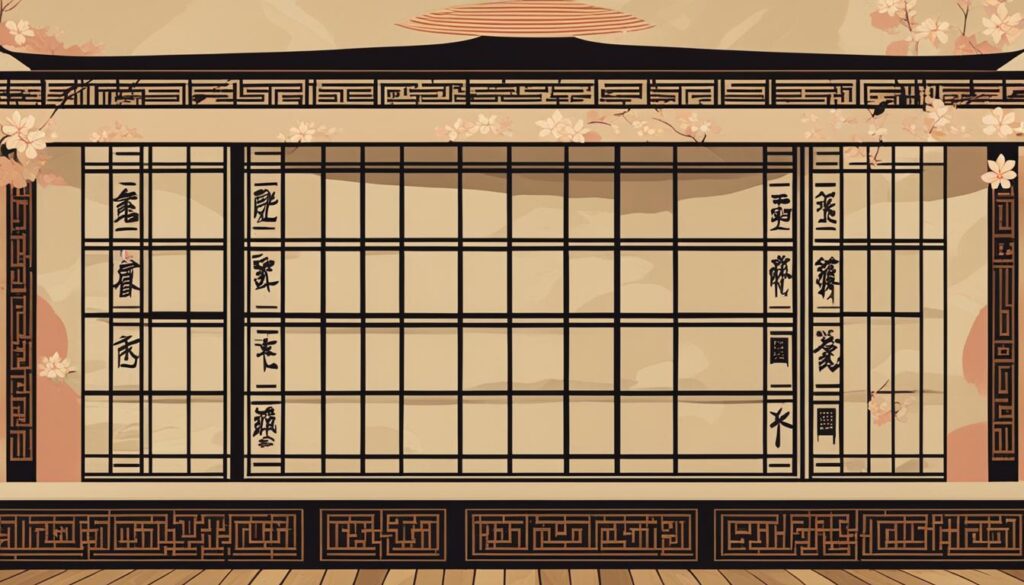Learning how to say the date in Japanese is essential when communicating in everyday life. Whether it’s making appointments, buying tickets, or asking for someone’s birthday, knowing how to express dates correctly is important. In Japanese, dates are typically written in the format of year, followed by month, and then day. However, there are exceptions and different ways to write dates depending on the context.
In this article, we will explore the different components of expressing dates in Japanese, including years, months, days, and days of the week. By the end, you’ll have a solid understanding of how to say the date in Japanese and be able to confidently communicate calendar dates in Japan’s language.
When it comes to expressing dates in Japanese, it’s important to understand the meaning and grammar behind it. Dates in Japanese usually follow the counter system, where the year, month, and day are sequentially stated. The standard format for expressing dates is to start with the year, followed by the month, and then the day. The year is represented by the kanji character “年” (nen), the month by “月” (gatsu), and the day by “日” (nichi). However, there are exceptions to this format depending on the context, such as on entry forms or specific instructions.
To pronounce dates in Japanese, it’s helpful to know the equivalent words in English. The word for “year” in Japanese is “年” (nen), “month” is “月” (gatsu), and “day” is “日” (nichi). By understanding how to pronounce these words, you can confidently express dates in Japanese.
When writing dates in kanji, you can use the characters “年” (nen) for “year,” “月” (gatsu) for “month,” and “日” (nichi) for “day.” By combining these characters with the respective numbers, you can accurately write dates in Japanese.
The usage of dates in Japanese is not only important linguistically, but also culturally. Understanding the Japanese date format is crucial when engaging in daily activities, such as scheduling appointments, planning events, or celebrating holidays. Additionally, being able to communicate dates correctly shows respect for Japanese culture and helps to avoid misunderstandings. By learning how to say the date in Japanese, you open up opportunities for better communication and cultural exchange.
How are Dates Usually Expressed in Japanese?
Dates in Japanese are typically expressed using the counter system, which involves stating the year, month, and day in a specific order. The standard format for expressing dates is to begin with the year, followed by the month, and then the day. In Japanese writing, the year is represented by the kanji character “年” (nen), the month by “月” (gatsu), and the day by “日” (nichi).
However, it’s important to note that there are exceptions to this format depending on the context. For example, on entry forms or specific instructions, the date order may vary. It’s crucial to pay attention to the specific requirements and formats when filling out forms or following instructions to ensure accurate expression of the date in Japanese.
Unlike English, Japanese has its own unique names for the months and days of the week. While English relies on names derived from Roman and Norse mythology, Japanese names for the months and days of the week are associated with nature and elements.
To illustrate the Japanese counter system for dates and provide a clearer understanding, here is a table showcasing examples:
| Date Component | Japanese Counter | Example |
|---|---|---|
| Year | 年 | 2022年 |
| Month | 月 | 3月 |
| Day | 日 | 15日 |
Here is an image that visually represents the Japanese counter system for dates:
Understanding how to express dates in Japanese, including the counter system and exceptions, is essential for effective communication in everyday life, whether it’s scheduling appointments, making plans, or discussing important events. By familiarizing yourself with the Japanese date format and vocabulary, you can confidently navigate date-related conversations and interactions in Japan.
For more detailed information on how to say years, months, and days in Japanese, continue reading the subsequent sections.
How to Say the Years in Japanese
When it comes to expressing years in Japanese, there are two common methods: using the Gregorian calendar or the Japanese era calendar.
In Japan, the Gregorian calendar, which is the internationally accepted calendar system, is widely used. To say a year in Japanese, you simply state the year followed by the kanji character “年” (nen), meaning year. For example, 2019 is expressed as “2019年” (ni-sen jū-kyū-nen).
On the other hand, Japan also has its own unique calendar system called the Japanese era calendar. The Japanese era calendar is based on the reigns of Japanese emperors, and each era has a distinct name. The current era in Japan is called “令和” (Reiwa), which began on May 1, 2019.
To express a year using the Japanese era calendar, you state the era name followed by the number for the year. For example, the first year of the Reiwa era is “令和1年” (Reiwa ichi-nen).
In addition to these calendar systems, there are specific terms in Japanese to describe relative years. For example:
| Japanese Term | English Meaning |
|---|---|
| 今年 (kotoshi) | this year |
| 去年 (kyonen) | last year |
| 来年 (rainen) | next year |
These terms are commonly used in everyday conversations when referring to specific years relative to the present.
Understanding the various ways to express years in Japanese will help you navigate conversations, dates, and events more accurately in the language.
How to Say the Months in Japanese
Expressing the months in Japanese is quite straightforward. Each month in Japanese is named after the number of the month followed by the kanji character “月” (gatsu), which means month. Here is a table showing the Japanese words for each month:
| English | Japanese |
|---|---|
| January | 一月 (ichi-gatsu) |
| February | 二月 (ni-gatsu) |
| March | 三月 (san-gatsu) |
| April | 四月 (shi-gatsu) |
| May | 五月 (go-gatsu) |
| June | 六月 (roku-gatsu) |
| July | 七月 (shichi-gatsu) |
| August | 八月 (hachi-gatsu) |
| September | 九月 (ku-gatsu) |
| October | 十月 (ju-gatsu) |
| November | 十一月 (ju-ichi-gatsu) |
| December | 十二月 (ju-ni-gatsu) |
It’s important to note that the pronunciation of some months may differ from their ordinary Japanese number counterparts. For example, the pronunciations for the months one to ten have unique readings. Learning these pronunciations will help you accurately communicate the months in Japanese.
How to Say the Days in Japanese

When it comes to expressing the days in Japanese, there are some irregularities and exceptions that make it a bit more complex than saying the months and years. The basic pattern for days in Japanese is to state the number of the day followed by the kanji character “日” (nichi), which means day. However, there are unique readings for the numbers one to ten that are different from the ordinary Japanese numbers.
After eleven, the regular numbers are used along with the word “nichi” to represent the respective day. Additionally, it’s common to use Arabic numerals alongside the kanji character “日” (nichi) to express dates. For example, “1日” (tsuitachi) represents the first day, “2日” (futsuka) represents the second day, and so on.
Understanding how to say the days in Japanese is crucial for effective communication and navigating daily life in Japan. Take a look at the table below for a breakdown of the Japanese day counter:
| Number | Reading | Counter |
|---|---|---|
| 1 | tsuitachi | にち / 日 |
| 2 | futsuka | ふつか / 二日 |
| 3 | mikka | みっか / 三日 |
| 4 | yokka | よっか / 四日 |
| 5 | itsuka | いつか / 五日 |
| 6 | mutsuka | むつか / 六日 |
| 7 | nanoka | なのか / 七日 |
| 8 | yōka | ようか / 八日 |
| 9 | kokonoka | ここのか / 九日 |
| 10 | tōka | とうか / 十日 |
| 11 | jūichi-nichi | じゅういちにち / 十一日 |
| 20 | nijū-nichi | にじゅうにち / 二十日 |
| 30 | sanjū-nichi | さんじゅうにち / 三十日 |
| 31 | senshi | さんじゅいちにち / 三十一日 |
As you can see from the table, the counter for days in Japanese is the kanji character “日” (nichi). Understanding the proper readings for the numbers and practicing their pronunciation will help you accurately express the days in Japanese.
How to Say the Days of the Week in Japanese
The days of the week in Japanese are named after elements and nature and end with the word “曜日” (yōbi), meaning day of the week.
The Japanese week starts on Sunday and follows this naming convention:
- 日曜日 (nichi-yōbi) – Sunday
- 月曜日 (getsu-yōbi) – Monday
- 火曜日 (ka-yōbi) – Tuesday
- 水曜日 (sui-yōbi) – Wednesday
- 木曜日 (moku-yōbi) – Thursday
- 金曜日 (kin-yōbi) – Friday
- 土曜日 (do-yōbi) – Saturday
This naming convention has its roots in the ancient Chinese system of the five elements – earth, water, fire, wood, and metal. Each element is associated with a celestial body or force, which influenced the choice of names for the corresponding days of the week in Japan. The Japanese language is full of rich cultural references, and understanding the naming conventions for the days of the week is an important part of mastering the language.

